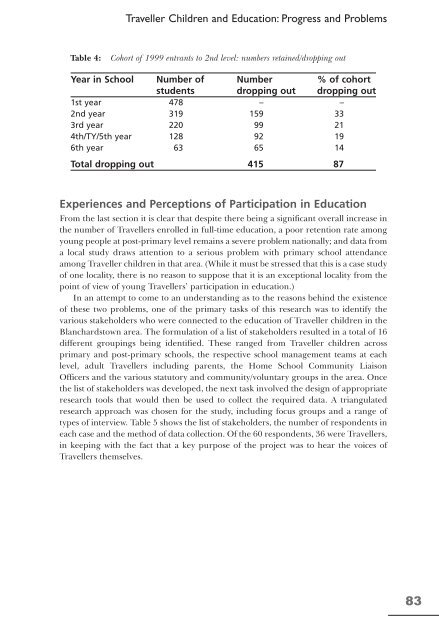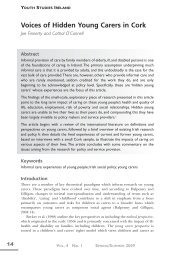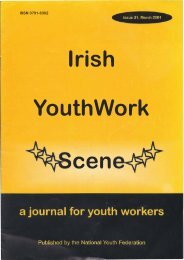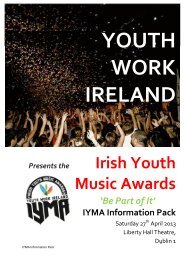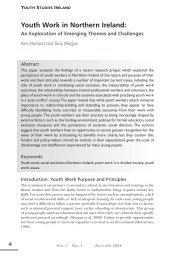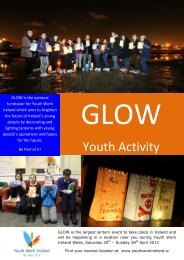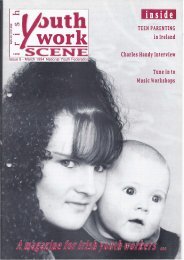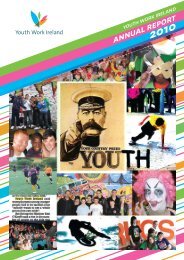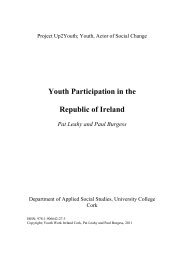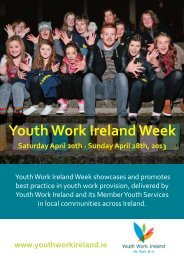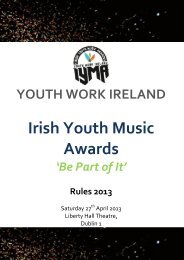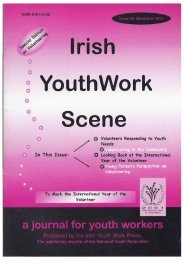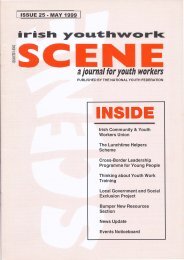Download full edition - Youth Work Ireland
Download full edition - Youth Work Ireland
Download full edition - Youth Work Ireland
You also want an ePaper? Increase the reach of your titles
YUMPU automatically turns print PDFs into web optimized ePapers that Google loves.
Traveller Children and Education: Progress and ProblemsTable 4:Cohort of 1999 entrants to 2nd level: numbers retained/dropping outYear in School Number of Number % of cohortstudents dropping out dropping out1st year 478 – –2nd year 319 159 333rd year 220 99 214th/TY/5th year 128 92 196th year 63 65 14Total dropping out 415 87Experiences and Perceptions of Participation in EducationFrom the last section it is clear that despite there being a significant overall increase inthe number of Travellers enrolled in <strong>full</strong>-time education, a poor retention rate amongyoung people at post-primary level remains a severe problem nationally; and data froma local study draws attention to a serious problem with primary school attendanceamong Traveller children in that area. (While it must be stressed that this is a case studyof one locality, there is no reason to suppose that it is an exceptional locality from thepoint of view of young Travellers’ participation in education.)In an attempt to come to an understanding as to the reasons behind the existenceof these two problems, one of the primary tasks of this research was to identify thevarious stakeholders who were connected to the education of Traveller children in theBlanchardstown area. The formulation of a list of stakeholders resulted in a total of 16different groupings being identified. These ranged from Traveller children acrossprimary and post-primary schools, the respective school management teams at eachlevel, adult Travellers including parents, the Home School Community LiaisonOfficers and the various statutory and community/voluntary groups in the area. Oncethe list of stakeholders was developed, the next task involved the design of appropriateresearch tools that would then be used to collect the required data. A triangulatedresearch approach was chosen for the study, including focus groups and a range oftypes of interview. Table 5 shows the list of stakeholders, the number of respondents ineach case and the method of data collection. Of the 60 respondents, 36 were Travellers,in keeping with the fact that a key purpose of the project was to hear the voices ofTravellers themselves.83


